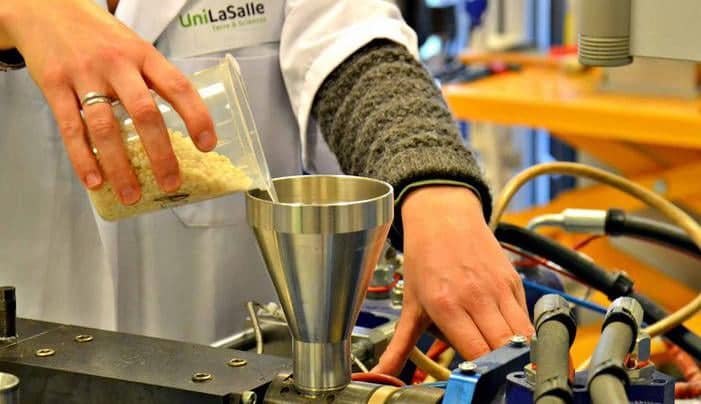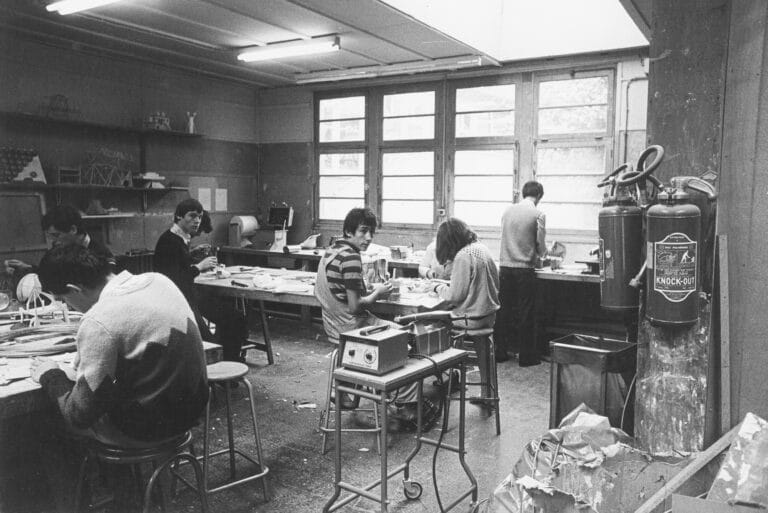
120 years of architectural education
Scientific directors: Sébastien Cherruet and Claire Rosset
with the contribution of Manon Pouille
The École nationale supérieure d'architecture de Normandie was the first architecture school to open in the French provinces, and this year celebrates the 120th anniversary of its founding and the 40th anniversary of its move to its current premises. To mark the occasion, the exhibition "120 ans d'enseignement en architecture" ("120 years of architectural education") attempts to sketch the portrait of an ever-evolving pedagogy.
1904-2024...
A work based on archives and recent scientific research reviews the evolution of architectural education in Rouen. The exhibition highlights the different locations occupied by the school over the years, and some of the singular figures who have left their mark on its walls. The intersection of these histories allows us to examine the specific moments and practices that have shaped the school's multiple identities.
May 68. Architecture too!
Scientific Director: Caroline Maniaque
The ATE laboratory, with the support of the Bureau de la recherche architecturale, urbaine et paysagère, has produced a travelling version of the exhibition "Mai 68. Architecture too", initially presented at the Cité de l'architecture et du patrimoine (Paris, May-September 2018). Fifty years after May '68, this event offered a broader vision of the history of architectural education and its renewal in the 1960s and 1970s.
Gathered together through a mobile display of picture rails and projections, the contents adapted by the exhibition curators - Caroline Maniaque, Éléonore Marantz and Jean-Louis Violeau - are now ready to be exhibited in schools of architecture and in cultural and museum institutions linked to architecture, the city and the spatial arts, in France and abroad.
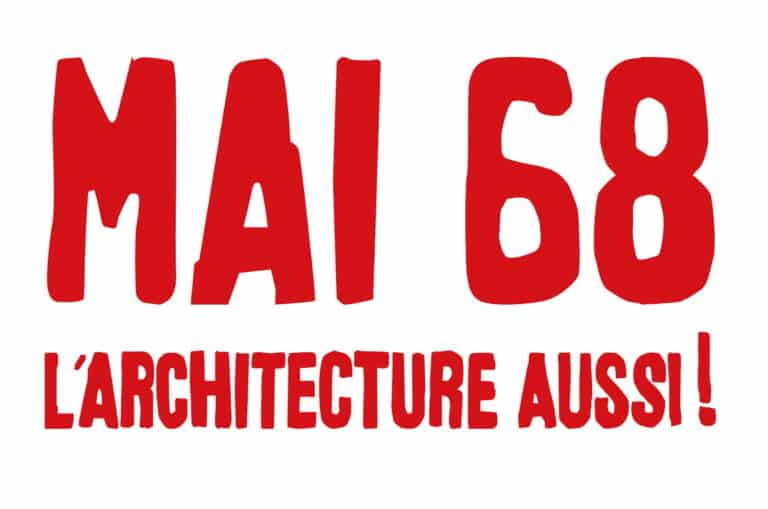
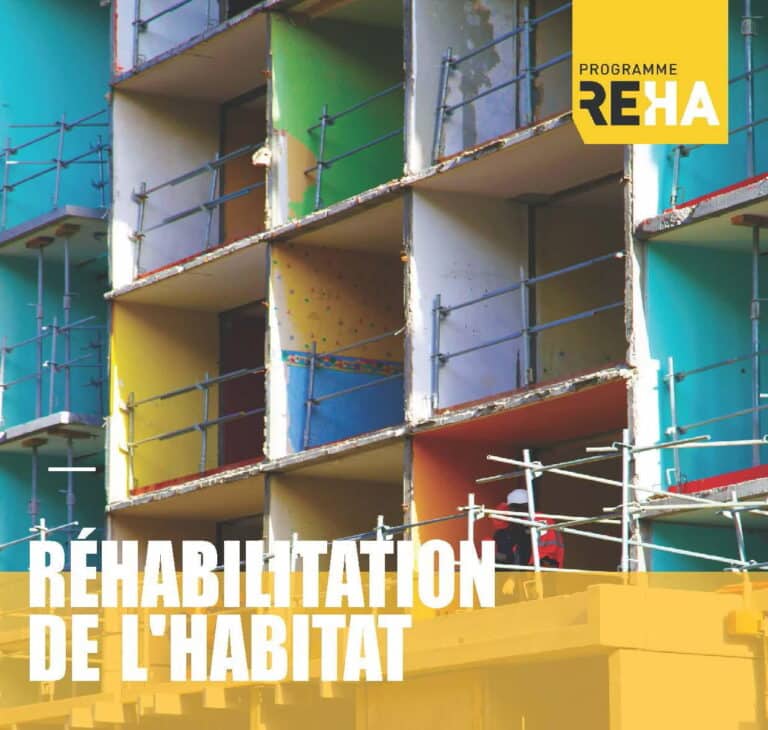
High Environmental Performance Housing Rehabilitation - REHA
Scientific Director: Valter Balducci
Within the framework of the national experimentation and research programme REHA, the project deals with rehabilitation training. This has led to a series of seminars and the publication of a book, published with the support of the PUCA, on the following subjects How to train students and professionals? What higher education is available in France? Which institutions or structures provide this training?
History of architectural education in the 20th century (HEnsA20)
Scientific leaders: Tricia Meehan, Valter Balducci: Rouen section
Today, there is no history of the teaching of architecture provided by the school that governed its destiny in France for two centuries: the École des Beaux-Arts (Ensba). Some have focused on its influence in the 19th century, others, more recently, on the upheavals that took place around 1968.
However, between the heyday of the school, during which provincials and foreigners converged on Paris to attend the workshops on the Quai Malaquais, and the period that marked the end of this model, several decades went by about which almost nothing has been written.
And that's without mentioning the regional schools, these branches created in 1903, so as not to force students to "go up" to Paris, about which there is the greatest silence.
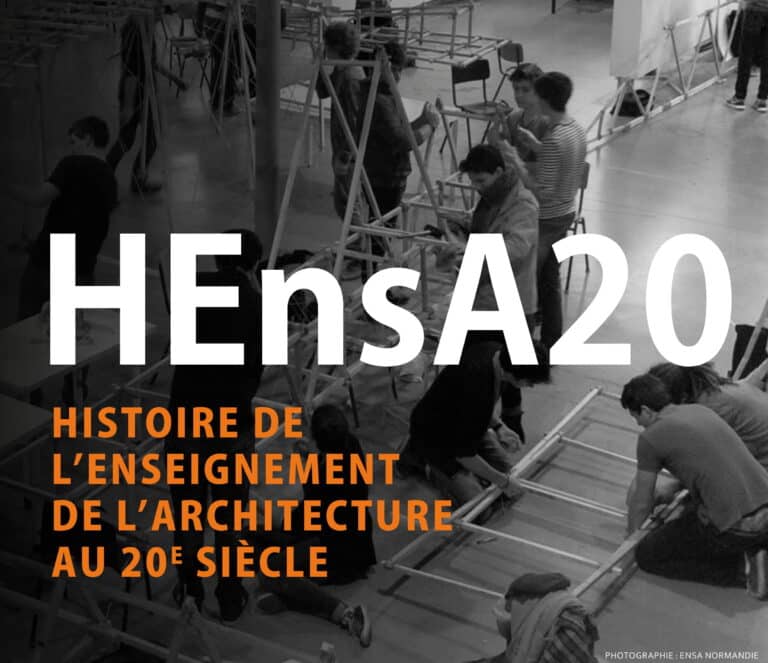
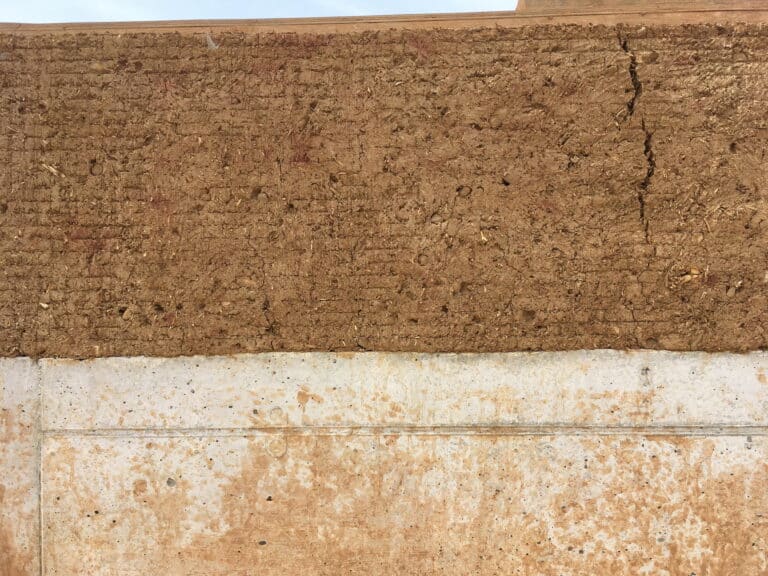
CobBauge - Interreg Project
Scientific Director: François Streiff
The Parc Naturel Régional Marais du Cotentin et du Bessin (PNRMCB ) has developed a specialised expertise in the construction techniques used in the area.
Its ambition is to enable the development of skills capable of ensuring the restoration of existing heritage. This partnership aims to explore the technical potential of this material, beyond the traditional morpho-technical paradigm.
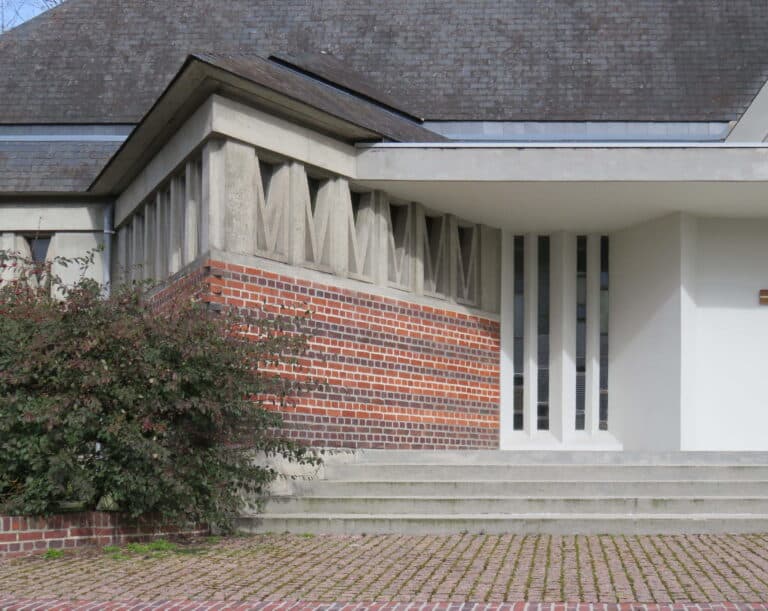
Cultural resource and urban project - Medium-sized cities of the Second Reconstruction
Scientific leaders: Patrice Gourbin and Camille Bidaud
This project is part of the interministerial programme " 20th century architecture, project material for the sustainable city of the 21stcentury".
It is jointly supported by the Ministry of Culture, the Ministry of Ecological Transition and Solidarity and the Ministry of Territorial Cohesion in conjunction with PUCA, the National Agency for Urban Renewal, the Caisse des dépôts et consignations and the Social Union for Housing.
This programme is also included in the 2016-2020 agreement of objectives signed by the Ministries of Urban Affairs and Culture, among the actions aimed at "facilitating the appropriation of the living environment by the inhabitants by developing architectural quality and taking into account the 20th century heritage, the history and the memory of the urban policy districts".
EC-45/85 - Cultural achievements 1945-1985 in France, an architecture for the 21st century?
Scientific leaders: Élise Guillerm, Xavier Dousson ENSAPL Lille
EC 45/85 refers to a singular architectural typology: the cultural facilities of the second 20th century, approached through the prism of building evolution and measured by a multidisciplinary approach.
These buildings have, in their time, allowed for open architectural research for their designers, both experimental and at the crossroads of all the spatial arts.
They represent original, prestigious objects, identified by their users. Without losing sight of the topicality of these buildings, the challenge of this research is to highlight the cultural and collective value that surrounds them, from their construction to the present day. The aim is to bring out the symbolic and imaginary aspect of these architectural buildings, which is still too often overlooked in the context of building adaptation projects.
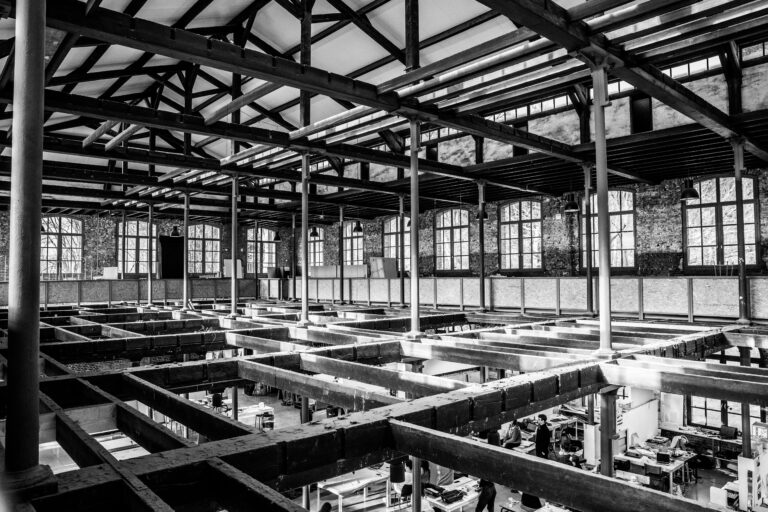
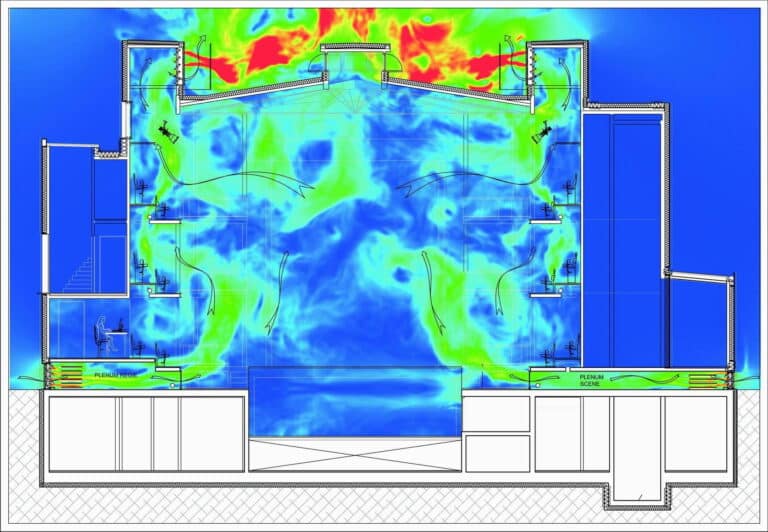
Smart French - Second century collective housing through the prism of energy
Scientific Director: Raphaël Labrunye
The project proposes to define a new approach to the thermal improvement of post-war housing buildings.
These buildings constitute a considerable reservoir of energy savings and at the same time present a singular and fragile aesthetic. However, the current methods of intervention show their weaknesses by leading to airtight buildings where all the thermal and aeraulic devices are mechanised, putting man at a distance from his environment.
ANR The Regeneration of Large-Scale Social Housing Estates through LivingLabs
Scientific Director: Dominique Lefrançois
This programme seeks, by crossing methods, views from different countries, disciplines and professions, to question participatory project practices in low-income neighbourhoods, to question the boundaries between research and project.
Research financed by the ANR, the European Smart City programme, brings together the Université Libre de Bruxelles, the AHTTEP research laboratory of ENSA Paris-La-Villette and the Polytechnic of Milan.
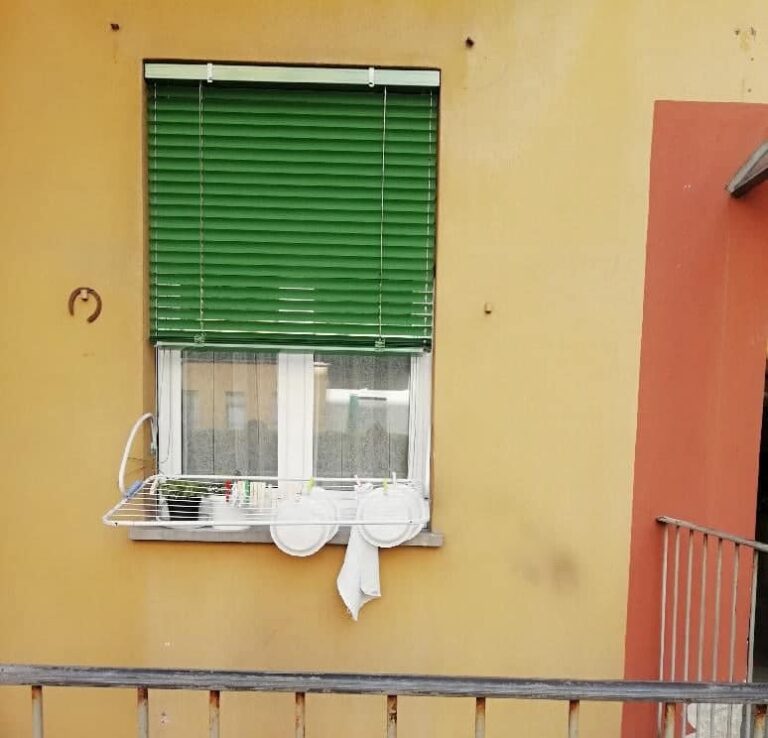

ARCHitectural European medium-sized City Arrangement - ARCHEA (Erasmus+ - Key Action 2 - Strategic partnerships for higher education)
Scientific leaders: Valter Balducci, Pierre-Antoine Sahuc
Actions under Key Action 2 enable organisations from different participating countries to cooperate, develop, share and exchange best practice and innovative approaches in the fields of education, training and youth.
Observation platform for urban projects and strategies - Popsu
Scientific directors: François Fleury and Élise Guillerm
The creation of the Rouen Normandy Metropolis in 2015 was the culmination of a recent process, which led four communities to merge in 2010 to build a conurbation community bringing together seventy-one communes and nearly 490,000 inhabitants. This allowed a change of scale in the understanding of the territory and the deployment of new public policies.
The aim is to examine what made this process possible and how it was carried out, but also to measure its impact, particularly in terms of the modes of relationship with the local productive fabric and the handling of social and environmental dynamics.

AMBIOS Partnership Chair
Scientific Director: François Fleury
The current issues of ecological and energy transition combined with the digital transition require a rethinking of production systems .
These questions challenge higher education and research institutions (HEIs) in the knowledge and skills to be transmitted to students.
Thus, and to go further, UniLaSalle is launching the Normandy Agro-resources and Bio-based Materials Industrial Chair. ENSA Normandie is an academic partner of this chair.
Because societal demand is changing, architecture is also evolving to anchor the architectural approach ever more firmly in the sustainable development of the habitat, which involves the use of new materials.
